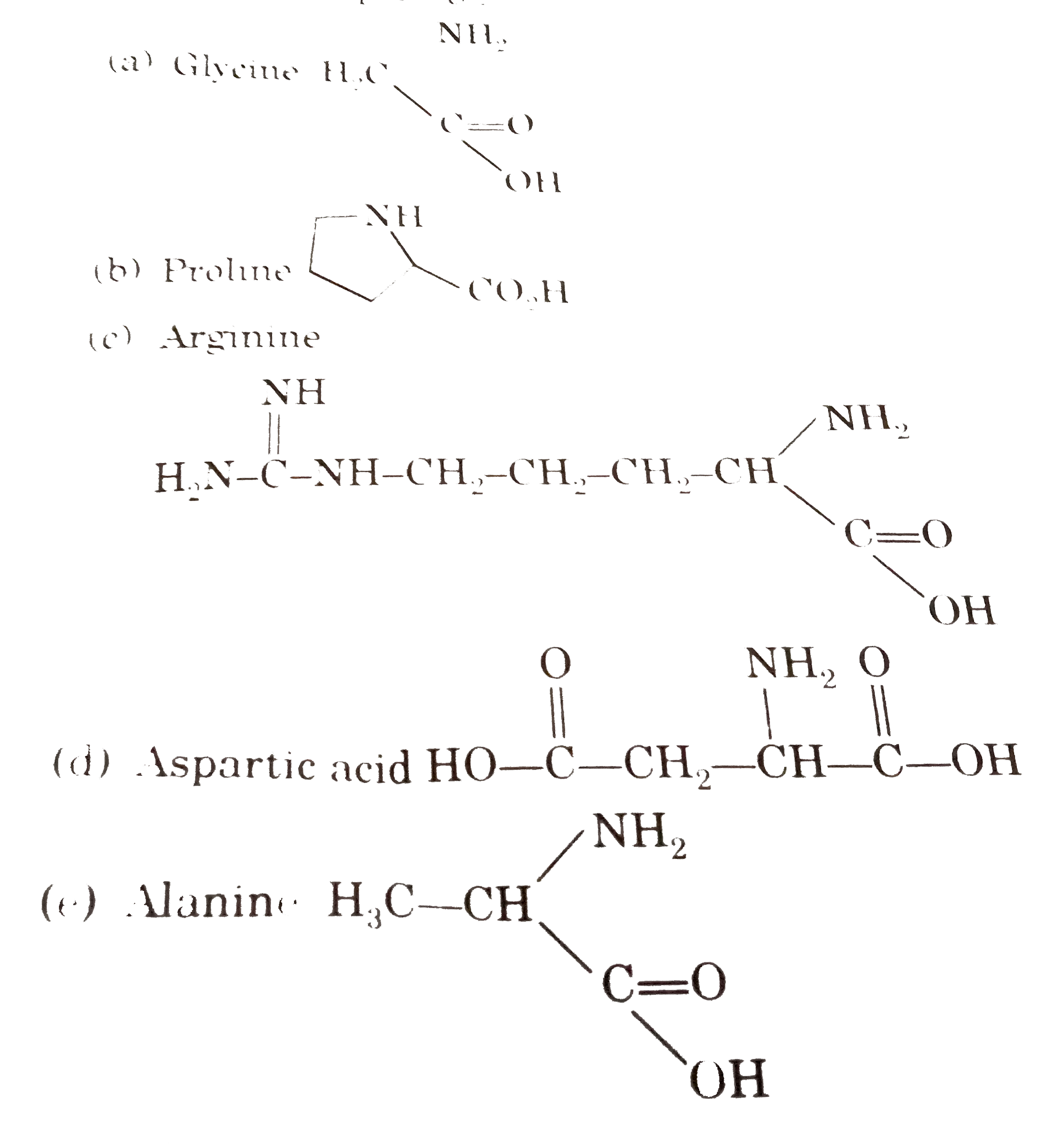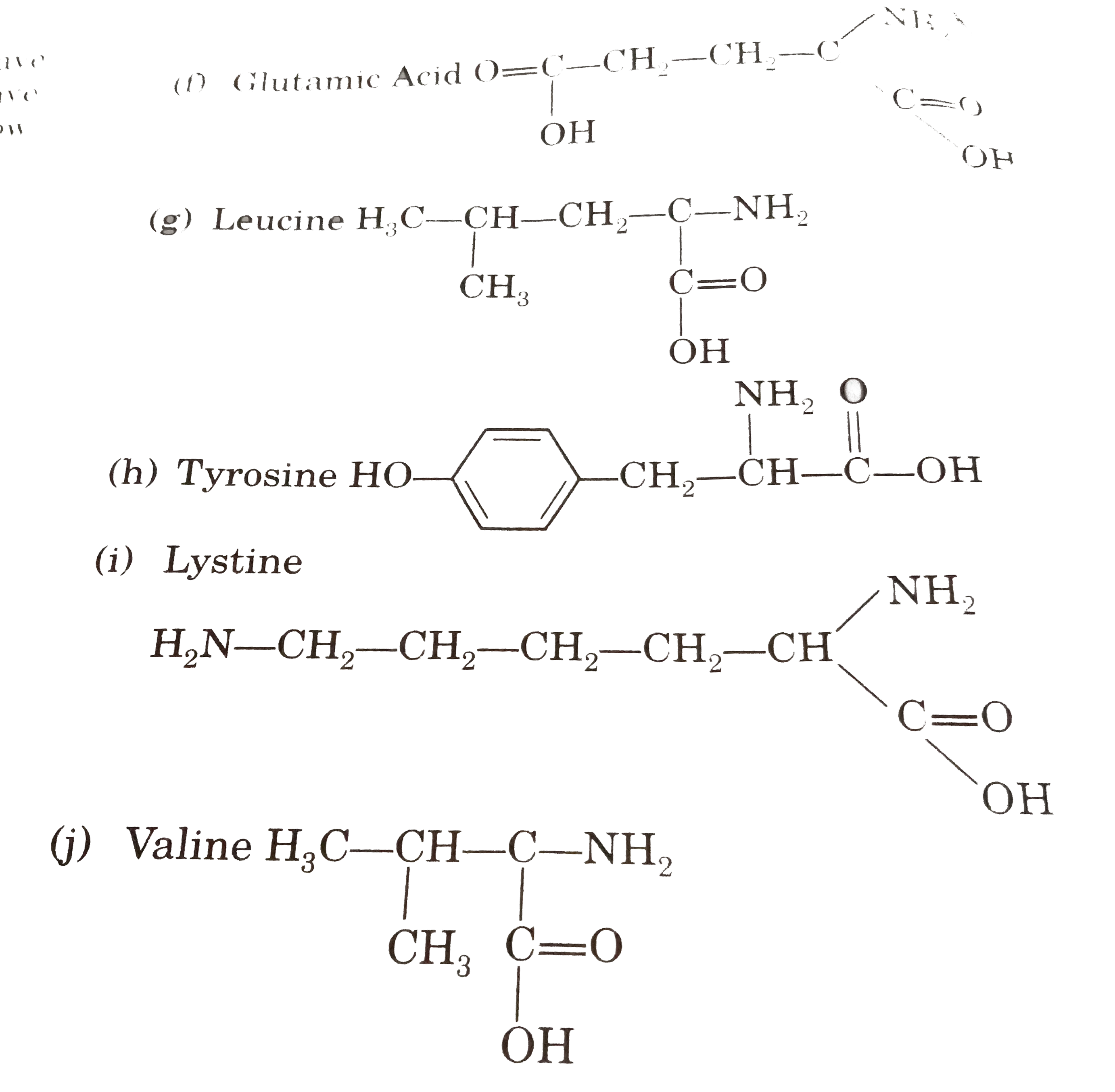In electric field the pH value at which amino acid doesn't migrate towards any electrode is called
Neutral point
Amphoteric point
Isoelectric point
All
The correct Answer is:C
Isoelectric point is the pH at which amino acid is neutral i.e. chargless hence NO migration towards any electrode.
Topper's Solved these Questions
- BOOK - MARVEL PUBLICATIONCHAPTER - BIOMOLECULESEXERCISE - TEST YOUR GRASP40videos
BIOMOLECULES
- BOOK - MARVEL PUBLICATIONCHAPTER - ALDEHYDES,KETONES AND CARBOXYLIC ACIDSEXERCISE - CARBOXYLIC ACIDS198videos
ALDEHYDES,KETONES AND CARBOXYLIC ACIDS
- BOOK - MARVEL PUBLICATIONCHAPTER - CHEMICAL KINETICSEXERCISE - TEST YOUR GRASP50videos
CHEMICAL KINETICS
Similar Questions
How many amino acids migrates towards anode on electrolysis at pH = 8 ?

 View Solution
View SolutionpH of the half-equivalence point of the titration of valine, (CH3)2CHCHNH2COOH, is 2.286 with HCl and 9.719 with NaOH. Calculate the isoelectric point of valine, that is, the pH at which the dipole ion does not migrate is an electric field.
View Solution
Knowledge Check
- Question 1 - Select One
+NH3−CH(R)−CO2H has its Ka1=10−7.pKa2 of this is 9.4, t which pH this amino acid will not migrate towards any electrode during electrolysis :
A9.4B8.2C7.6D2.4 - Question 2 - Select One
The pH value of the solution in which a particular amino acid does not migrate under the influence of an electric field is called the
Aeutectic pointByielding pointCisoelectric pointDeffusion - Question 3 - Select One
The pH value of the solution in which a particular amino acid does not migrate under the influence of an electric field is called the
Aeutectic pointByielding pointCneutralisation pointDisoelectric point.
Under the influence of an electric field the particles in a sol migrate towards cathode. If the sol solutions. Their coagulation values will be in the order
View SolutionThe colloidal particles are electrically charged as a indicated by their migration towards cathode or anode under the applied electric field. In a particular colloidal system, all particles carry either positive charge or negative charge.
The electric charge on colloidal particles orginate in several ways. According to preferential adsorption theory, the freshly obtained precipitate particles adsorb ions from the dispersion medium, which are common to their lattice and acquire the charge of adsorbed ions. For example, For example, freshly obtained Fe(OH)3 precipitated is dispersed, by a little FeCl3, into colloidal solution owing to the adsorption of Fe3+ ions in preference. Thus sol particles will be positively charged.
In some cases the colloidal particles are aggregates of cations or anions having ampiphilic character. When the ions posses hydrophobic part (hydrocarbon end) as well as hydrophilic part (polar end group), they undergo association in aqueous solution to form particles having colloidal size. The formation of such particles, called micelles plays a very important role in the solubilization of water insoluble substances, (hydrocarbon, oils, fats, grease etc.). In micelles, the polar end groups are directed towards water and the hydrocarbon ends into the centre. The charge on sol particles of proteins depends on the pH. At low pH, the basic group of protein molecule is ionized (protonated) and at higher pH (alkaline medium), the acidic group is ionized. At isoelectric pH, characteristic to the protein, both basix and acidic groups are equally ionized. The stability of colloidal solution is attributed largely to the electric charge of the dispersed particles. This charge causes them to be coagulated or precipitated. On addition of small amount of electrolytes, the ions carrying oppiste charge are adsorbed by sol particles resulting in the neutralization of their charge. When the sol particles either with no charge or reduced charge, come closer due to Brownian movement, they coalesce to form bigger particles resulting in their separation from the dispersion medium. This is what is called coagulating or precipitation of the colloidal solution. The coagulating power of the effective ion, which depend on its charge, is expressed in terms of its coagulating value, defined as its minimum concentration (m mol/L) needed to precipitate a given sol.
Under the influence of an electric field, the particles in a sol migrate towards cathode. The coagulation of the same sol is studied using NaCl, Na2SO4 and Na3PO4 solutions. Their coagulating values will be in the order :View SolutionUnder the influence of an electric field, the particles in a sol migrate towards cathode. The coagulation of the same sol is studied using NaCl, N2a4SandN3a4P solutions. Their coagulating values will be in the order :
View SolutionUnder the influence of an electric field, the particles in a sol migrate towards cathode. The coagulation of the same sol is studied using NaCl,Na2SO4 and Na3PO4 solutions. Their coagulation values will be in the order :
View SolutionIn an electric field, if an amino acid migrates towards cathode, the pH of the solution is said to be
View Solution

